Peter III
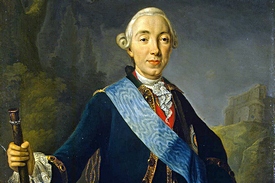
Born: Kiel, Holstein-Gottorp, 21 February 1726
Died: Ropsha, 6 (17) July 1762
Reigned: 1762
The son of the Duke of Holstein-Gottorp, Karl Friedrich, and the Peter the Great's daughter, Anna Petrovna (1708-1728), the future Emperor Peter II was born in the German port city of Kiel in1728 and, until he accepted the Orthodox faith, bore the name Karl-Peter-Ulrich. Curiously, this grandson of Peter the Great was simultaneously the grand-nephew of Peter's fierce enemy, Charles XII of Sweden, and originally, Karl-Peter-Ulrich was considered a likely candidate for the Swedish throne, but fate decided otherwise. After the childless Elizabeth I ascended to the Russian throne in 1742, she called the young boy to Russia, where he accepted the Russian Orthodox faith and was declared heir to the Russian throne.
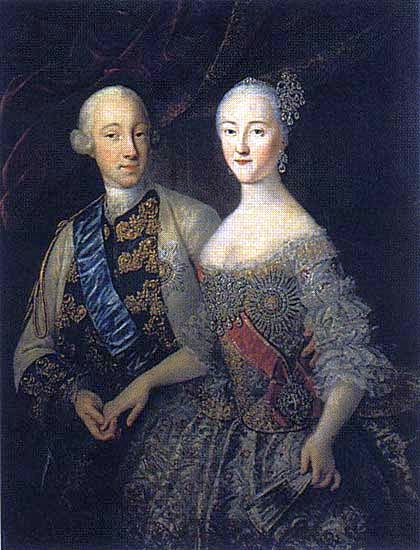
It is generally accepted - although largely unfairly - that Peter did not receive a systematic education in Holstein. In fact, he was tutored by capable teachers, he could read German, French and Latin, enjoyed music, and possessed an extensive library. However, as he was being groomed for the Swedish throne, he was raised in the Lutheran faith and infused with Swedish patriotism. For this reason, his new Russian homeland and its language and traditions were alien to him. Upon arriving in Russia, the heir to the throne, now called Peter after his baptism into the Orthodox faith, was given a new teacher, the scholar Jacob von Staehlin. However, Peter's hurried marriage to a princess from the small German principality of Anhalt-Zerbst, Sophie Friederike Auguste (the future Catherine the Great), put an end to any sort of systematic education.
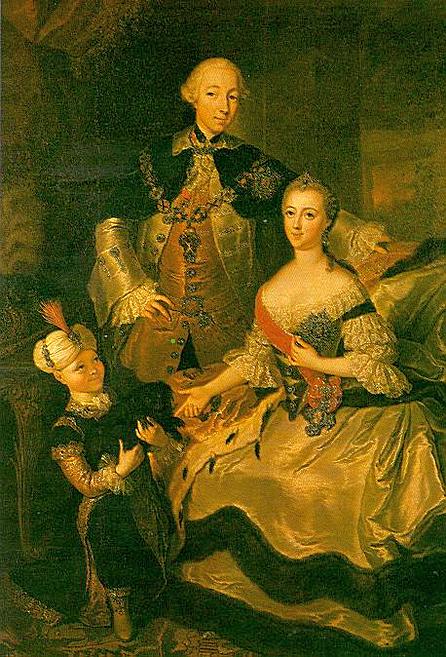
Inasmuch as this was a marriage based not on love, but rather on the dynastic calculations of his aunt, the Empress Elizabeth, it is hardly surprising that Peter and his new wife were not overly fond of each other, especially considering that they had few common interests. Peter found his chief and only pleasure in military exercises and maneuvers, and eventually, he gave up all pretense at concealing his aversion to his wife: during maneuvers at Oranienbaum, his small army of Holstein soldiers fired on the so-called Catherineburg ("Catherine's City") Fort and at the Catherine Gallery located next to a nearby pond. Although he was heir to the Russian throne, Peter remained a Holstein Duke and cherished the hope of restoring the integrity of his Duchy, from which the Danes had grabbed a large amount of territory including the family castle of Gottorp. In Oranienbaum, he created his own personal Guard, consisting of soldiers imported from his native Holstein, and these soldiers were educated and clothed in uniforms along Prussian lines. In military affairs, the heir to the throne was an enthusiastic follower of the Prussian king, Friedrich II. When Elizabeth led Russia into the Seven Year War against Prussia, Peter almost openly expressed his displeasure with the Empress's foreign policy.
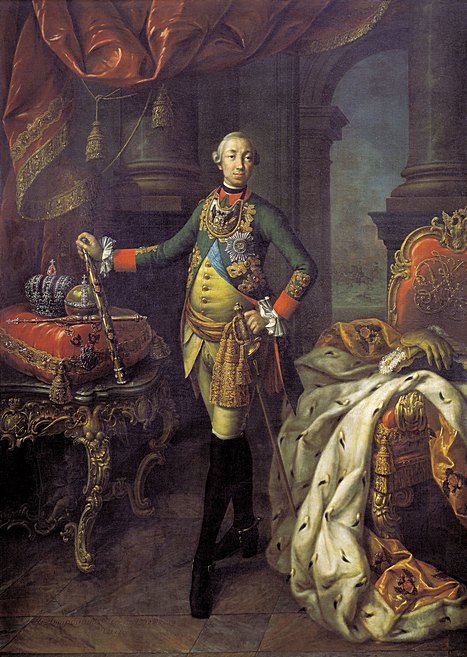
In 1761, Elizabeth died, and her heir ascended the throne under the name of Peter III. Everything that the new monarch started was subsequently so comprised by later reviews from Catherine the Great's supporters that today it might seem as if Peter III was indeed an eccentric ignoramus, as he was represented by contemporary writers and memoirists. However, facts are stubborn things and they show that the plans of Emperor Peter III were, although at times inconsistent, nonetheless clearly goal-oriented. Peter tried to reform the Russian army along Prussian lines, which could have been interpreted as unpatriotic, but this completely reflected the pan-European fashion of the time: Prussians were the "trendsetters" in all things military. Peter did not push for Prussian defeat (practically inevitable at the time) in the Seven Years War, but rather withdrew Russian troops and formed an alliance with Friedrich II. This abrupt change reflected a shift in foreign policy and halted unnecessary bloodshed. Peter considered declaring war on Denmark, that longtime aggressor towards his beloved Holstein homeland. Ascending to the throne, Peter issued a decree entitled "Freedom of the Nobility" which rescinded the compulsory military or state service for nobles that had been introduced by Peter the Great. Peter III also abolished the Secret Chancellery, the political police and the investigative organs from the time of the Empresses Anna and Elizabeth, which were feared by nobles and commoners alike. Finally, Peter allowed Old Believers, who had earlier fled government persecution, to return to Russia.
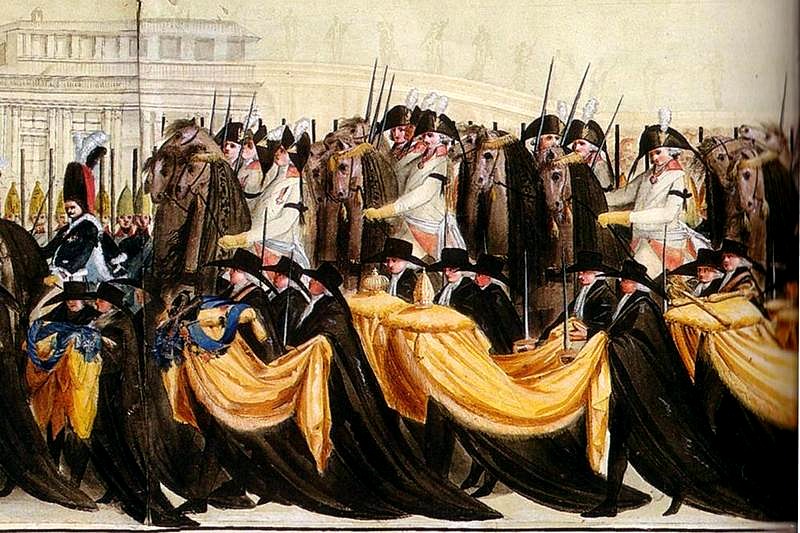
It might seem as if the new Tsar and his advisors did everything in their power to attract the widest possible sections of the population to their side. However, the monarch's new system of organization was based on his Holstein troops, which was antipathetic to the Russian Guard, the elite of the armed forces. Empress Catherine actively fuelled this dissatisfaction, and the French ambassador happily provided financial support for the burgeoning conspiracy, as his government was displeased with Peter's rapprochement with Prussia. While Peter and his court were in Oranienbaum, the two Orlov brothers, Grigory and Alexey, raised a revolt among the Guard and soon thereafter, the Guard, the Senate, and the Synod took an oath to Catherine. Peter was arrested and held in a palace in Ropsha on the outskirts of St. Petersburg by a group of Guards led by Alexey Orlov. There the deposed Emperor unexpectedly died of an "accident" (according to one version, in a conflict with his "captors"). Apparently, Catherine was not terribly opposed to the death of her unloved husband - she didn't even bother to punish those people who had guarded him. The country was informed that the monarch had died, and Catherine came to the throne from which she would rule for thirty-four years.
Peter was first buried in the Alexander Nevsky Lavra, and only in 1796, upon the decree of his son, the Emperor Paul, was the coffin with his body reburied in the Peter and Paul Cathedral, next to the grave of his estranged spouse, Catherine the Great.

